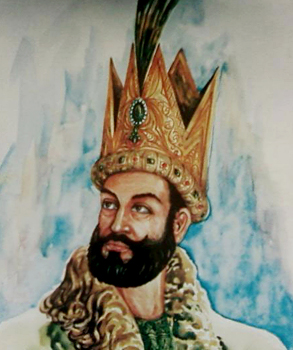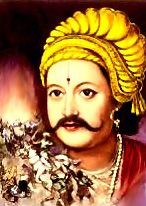
Kumarapala
Coins
Kumarapala (reigned 1143–1172 CE) was a prominent ruler of the Chaulukya (Solanki) dynasty, which governed present-day Gujarat and surrounding regions from its capital at Anahilapataka (modern Patan). He was a descendant of Bhima I and succeeded Jayasimha Siddharaja, after spending his early life in exile to avoid persecution by his predecessor.Territorial Expansion: Kumarapala’s empire stretched from Chittor and Jaisalmer in the north to the Vindhyas and Tapti river in the south, and from Kachchha and Saurashtra in the west to at least Vidisha in the east. He subdued several neighboring rulers, including the Chahamana king Arnoraja and the Shilahara king Mallikarjuna, and annexed the Paramara territory of Malwa.Religious Patronage: Kumarapala is renowned for his strong patronage of Jainism, though he also supported Shaivism. Jain texts and inscriptions describe him as a generous supporter of arts, architecture, and religious institutions, making him a significant figure in Western India\'s religious history. Administration and Legacy: His rule is marked by stability, cultural patronage, and architectural achievements. He is credited with building temples and supporting religious scholars. He was succeeded by Ajayapala, who retained his territories for a brief period.

Jayasimha II
Coins
Jayasimha II was a significant ruler of the Western Chalukya (Kalyani Chalukya) dynasty, reigning from 1015 to 1043 CE. Also known as Jagadhekamalla I and Mallikamoda, he succeeded his brother Vikramaditya V and ruled during a period of both military challenge and cultural achievement.Military Campaigns: Jayasimha II faced persistent threats from the Cholas in the south and the Paramaras in the north. He engaged in several battles to defend and expand his kingdom, including campaigns in Vengi (Eastern Chalukya territory), where he installed Vijayaditya on the throne after defeating the Cholas at Vijayawada in 1037 CE. He also fought back a coalition of the Kalachuris, Paramaras, and Cholas, successfully defending his realm. Cultural Patronage: His reign is notable for a flourishing of Kannada literature. He supported prominent writers like Durgasimha (author of a Kannada Panchatantra), Chavundaraya II (encyclopedia Lokopakara), and others. Jain and Shaiva scholars also thrived under his patronage, reflecting religious diversity at his court. Political Context: Despite facing setbacks, such as the Cholas gaining control over Vengi, Jayasimha II consolidated Western Chalukya power in the Deccan. His efforts set the stage for the dynasty’s resurgence under his successor, Someshvara I. Administration: Jayasimha II maintained a strong administrative system, balancing central authority with local autonomy, and was known for his efficient governance.
.jpg)
Rana Hastin
Coins
Rana Hastin (also referred to as Rana Hasti) was a feudatory ruler under the Chalukya (Chaulukya) dynasty, specifically associated with the Chalukyas of Gujarat, who ruled parts of present-day Gujarat and Rajasthan between roughly 900 and 1000 CE. He is primarily known from extremely rare silver coins (damma or drachm) issued in his name, which feature an elephant motif and early Nagari script.
